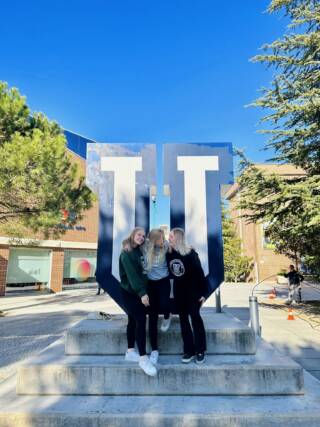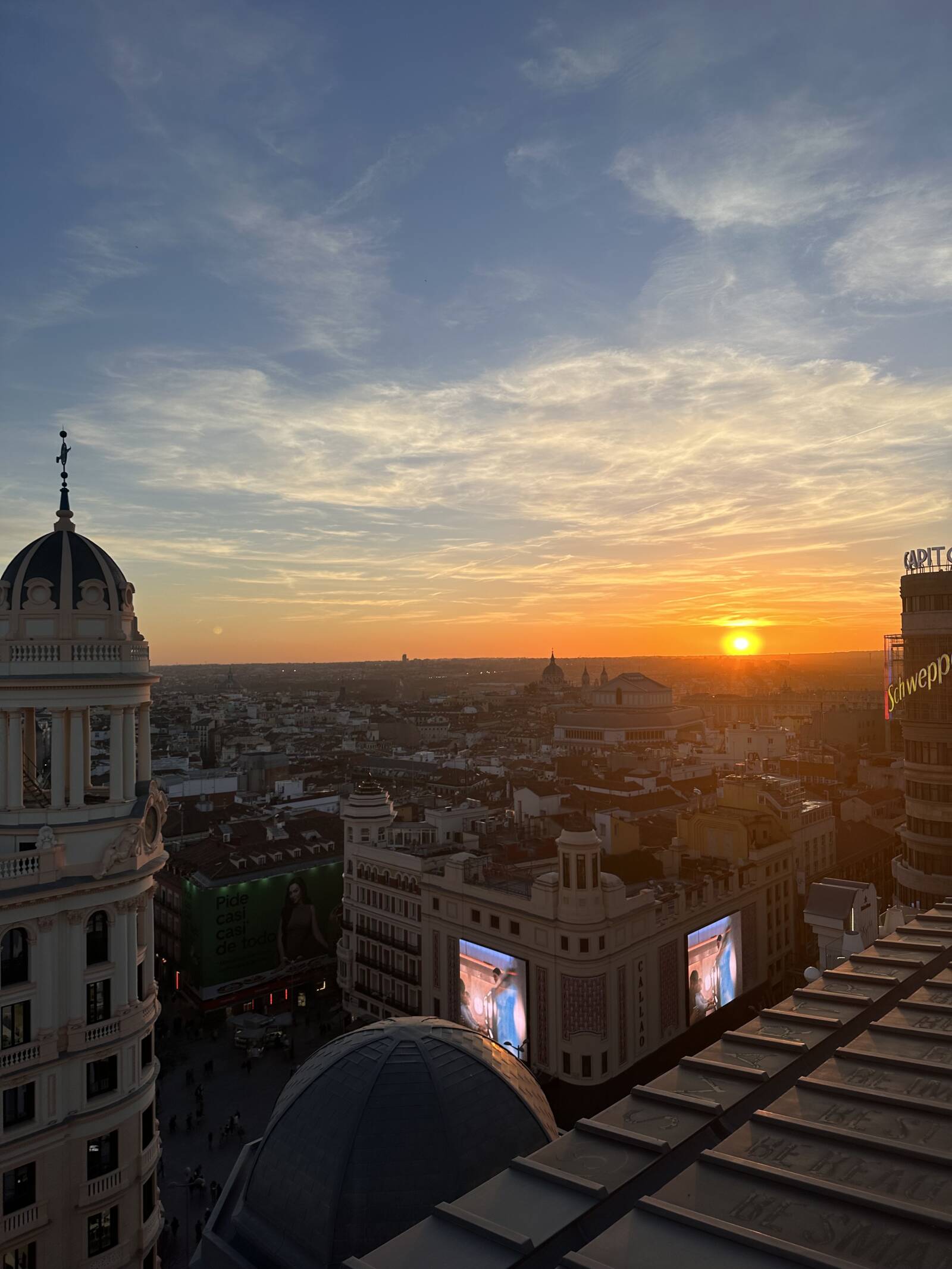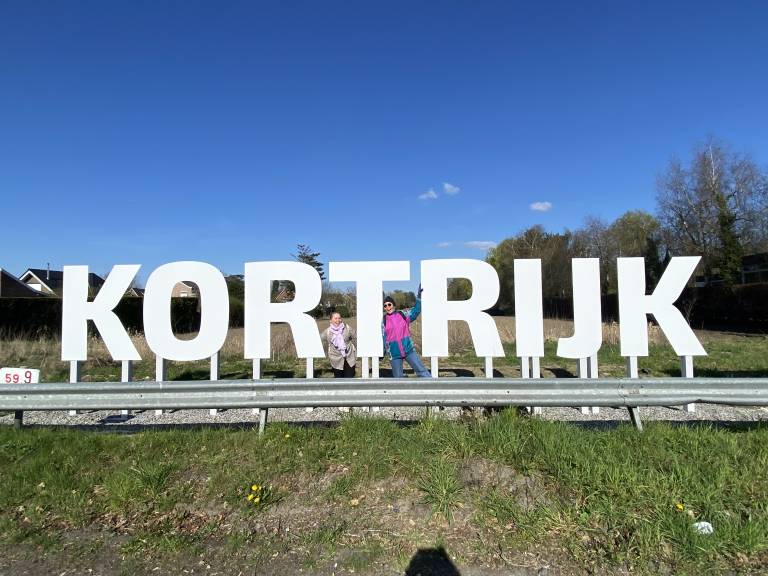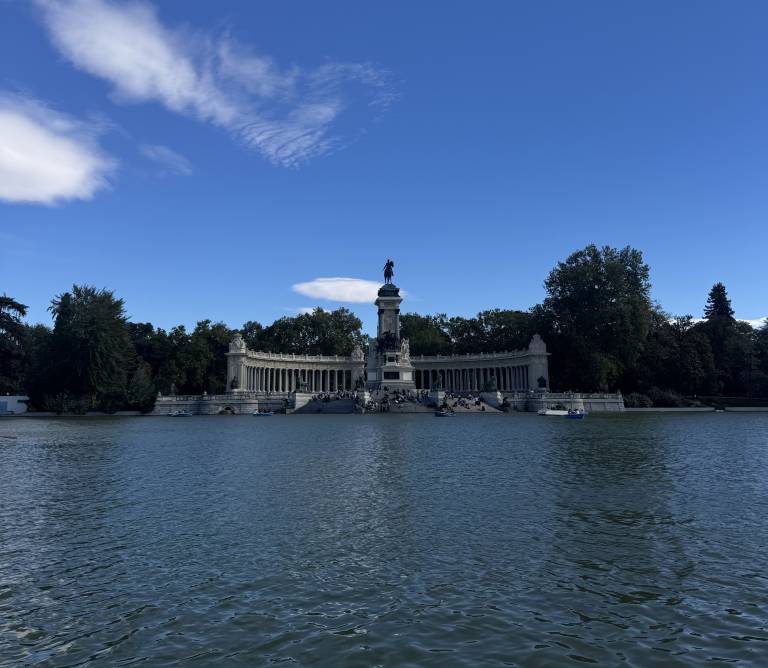I studied at the University of Francisco de Vitoria in Madrid. Studying there was quite relaxed. The quality of education was good. However, some courses were very much at the high school level. For example, the Spanish language course felt like studying in high school. Traditional papers were used a lot instead of computers. The downside of this Spanish language course was that our professor couldn’t speak English. Especially at the beginning, it was difficult to understand instructions.
I chose Spanish language, project management, entrepreneurship, and intercultural management courses for myself. The professors of other courses spoke English very well, and the teaching was high-quality. I was pleasantly surprised by how relaxed the classes were. Of course, there was a lot of content covered, so often there was still studying to do at home.
The Francisco de Vitoria campus itself was great. There were many different food places, a large sports building, tennis and paddle courts, and a big library. The only thing missing was a self-study area. It felt like, especially in the last week before Christmas, it was difficult to find a space to study. Otherwise, the campus was nice and modern.

My free time mainly consisted of exploring the city. We spent a lot of time with other exchange students. Madrid offers plenty of activities both during the day and at night. There was an organization called Citylife Madrid that arranged activities for exchange students. From there, you could book trips abroad as well as various activities.
For example, we participated in a salsa & bachata dance course, which was incredibly fun! During our free time, we made trips to Morocco and Portugal. In addition to these, we also visited Tenerife and Barcelona.
The nightlife in Madrid was interesting. There were parties with different themes every day. There were plenty of clubs on almost every street in Madrid. The downside of nightlife was that there were many thieves. Many of my friends had their phones stolen in nightclubs. The use of various intoxicating substances was also common in clubs. Overall, I found Madrid to be a safe city, but one had to be cautious at night.

The cultural differences between Finland and Spain were quite significant. It was challenging to adjust to the Spanish “mañana” culture, as everything seemed to involve waiting. It felt like even in the grocery store, there could be a long line of customers and only one cashier open. We often got frustrated with how slow Spanish people could be. Responses could be waited for weeks, and uncertainty was present all the time.
Education in Spain was of lower quality compared to Finland. It seems that in Finland, there is respect when the professor speaks and students pay better attention. It felt like in Spain, others did not respect silence, and nobody focused during classes. Additionally, many professors seemed uninterested in whether students were listening or not.
The cultural differences were also evident in how things are approached more casually in Spain. In Finland, schedules are kept, and work is done on time. In Spain, it felt like many different things were approached with a very relaxed attitude. Construction sites could last for months, and it was amusing to notice how three workers watched while one did the work. This quite well reflected Spanish culture.
However, Spain as an exchange destination was good! I highly recommend Francisco De Vitoria, as the language of instruction there was English, and everything was easily taken care of. As a country, Spain was slightly cheaper compared to Finland. Of course, Madrid as a city was a bit more expensive than, for example, Barcelona. It’s worth allocating time to find accommodation, as the competition is tough there. Otherwise, Madrid is an absolutely fantastic student city!






Comments